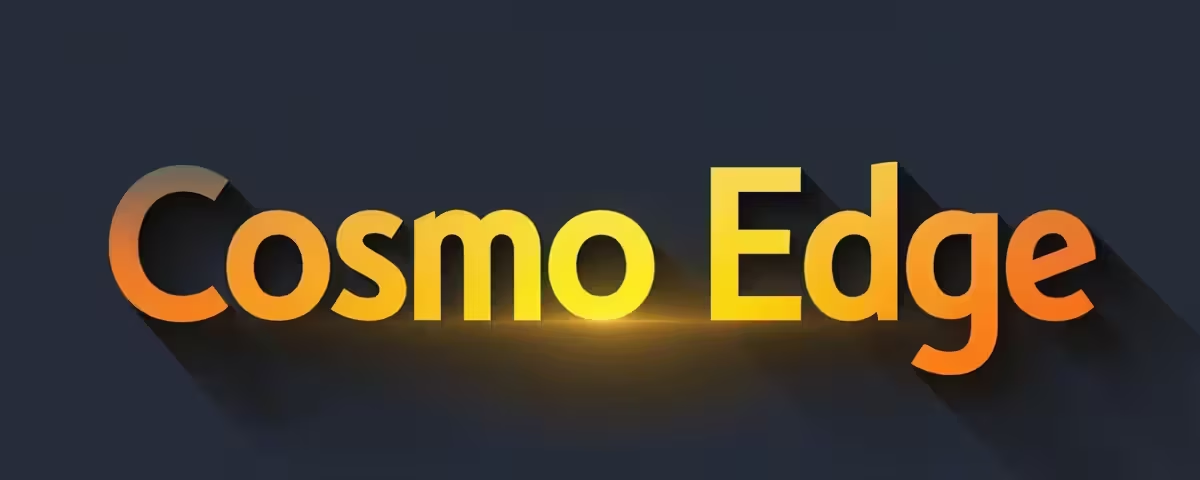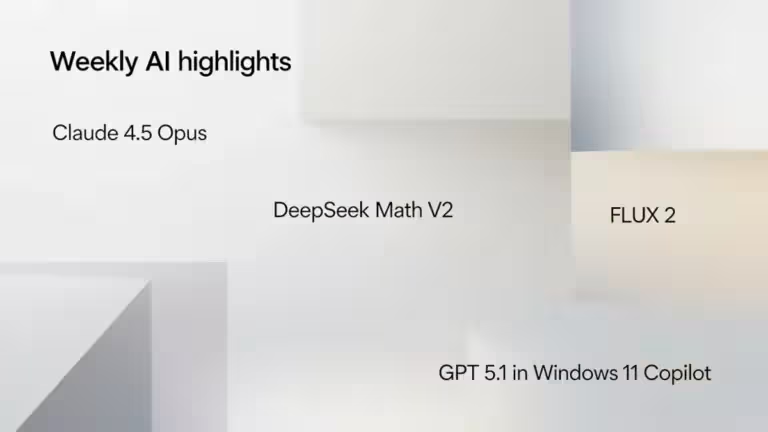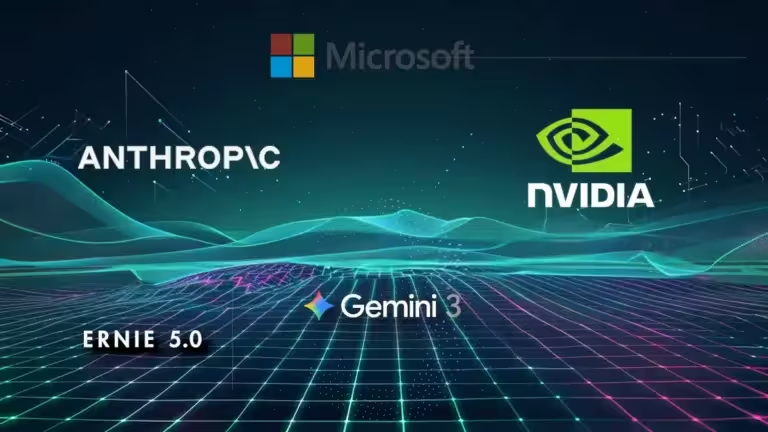Media Monitoring Tools Trends 2025: 5 Innovations That Change Everything

Media monitoring tools are experiencing an unprecedented transformation in 2025. Generative artificial intelligence, brand visual recognition, TikTok integration, reinforced GDPR compliance and predictive capabilities are the five trends reshaping media monitoring and online reputation management. In this final guide of our series, we analyze these major transformations and answer essential questions to help you get operational immediately.
New to media monitoring? Start with our complete guide to choose a media monitoring tool or check our selection of free media monitoring tools and our comparison of paid solutions.
The 5 major trends of media monitoring tools in 2025
1. Generative artificial intelligence becomes the standard
Generative AI is no longer optional, it is a standard in professional media monitoring platforms. According to a study by Archimag and ChapsVision with over 100 professionals, monitoring teams are shrinking (75% composed of 1 to 3 people in 2025 compared to 66% in 2023), making AI automation critical to maintain efficiency.
Conversational assistants automate time-consuming data collection tasks and enable analyses impossible to perform manually. The global AI market is projected to reach 305.9 billion dollars by the end of 2024, with 35% of companies worldwide already using AI in their business operations according to Statista.
Concrete innovations deployed:
Leading solutions now integrate AI assistants that generate automated reports, analyze competitive intelligence and detect emerging crises. Meltwater Mira works in natural language: “Show me the 10 most important mentions this week and suggest 3 LinkedIn posts”. Feedly Leo automatically categorizes content, detects weak signals in RSS feeds and prioritizes articles based on your reading habits. Cision provides instant media summaries and identifies potentially harmful content before publication.
A digital communication professional from a large French company shares: “AI allowed us to reduce monitoring from 11 hours to 4 hours per week, while covering three times more sources than before. False positives decreased by 70%, allowing us to focus on strategic analysis rather than filtering.”
Measured productivity impact:
- Time savings: 40-60% on manual source analysis
- Early detection: Emerging trends identified 2-3 days before human recognition
- Insight quality: 70% fewer false positives thanks to machine learning
- Productivity: One analyst processes 3-5x more information sources than in 2023
What changes for professionals: The role shifts from “data collector” to “strategic analyst”. Repetitive filtering tasks disappear in favor of high-value analyses. New required skills: mastering AI prompts, validating algorithmic outputs, interpreting complex information patterns. According to Archimag 2025, competitive intelligence adoption increased by 10 points in one year (from 24% to 34%), highlighting this strategic shift.
Recommended resource: Explore the complete Asana guide on information monitoring to deepen your understanding of AI applications in business.
2. Visual recognition of logos and products becomes a standard
In 2025, your brand can be mentioned without any associated text. Visual recognition systems capture these “invisible” mentions that traditional text monitoring misses. This technology addresses a growing need: with global data volume exceeding 185 zettabytes in 2025 (40% growth since 2021 according to Statista), images and videos now represent over 60% of social media content.
Deployed computer vision technologies:
Talkwalker detects over 30,000 logos in images and videos, even when the brand is not mentioned in text. Image recognition technology works on Instagram, TikTok, YouTube, Pinterest and even ephemeral stories. Beyond logos, algorithms identify products in real-life situations (clothes worn, products consumed) and analyze visual context: facial sentiment, indoor/outdoor use, spontaneous brand associations.
Transformative use case in online reputation monitoring:
A Parisian luxury brand detects its iconic handbag in 847 Instagram photos last month, while only 203 posts mention the brand in text. Thanks to automated visual monitoring, it captures 76% more mentions (644 additional mentions) and identifies 12 micro-influencers who regularly feature the product without being official ambassadors.
This discovery allows the brand to launch a targeted ambassador program, generating an estimated ROI of €180,000 over six months thanks to the perceived authenticity of these organic collaborations. The marketing director explains: “We were missing 75% of our actual mentions. Visual recognition revealed a community of natural ambassadors we would never have identified otherwise.”
Adoption statistics: According to Meltwater, 48% of marketers now use visual recognition tools for brand monitoring, compared to 23% in 2023. This rapid adoption reflects the increasingly visual nature of social media.
Current limitations of the technology: Performance varies depending on image/video quality, false positives occur with similar logos (error rate of 5-8%), high computational cost reserved for premium platforms, difficulties with partially hidden logos or unusual angles.
3. TikTok and emerging platforms fully integrated into media monitoring
2025 marks the maturity of TikTok integration in professional social listening solutions. The numbers are clear: TikTok counts 1.59 billion monthly active users in 2025 (compared to 1 billion in 2021), with 27.8 million users in France spending on average 38h38 per month on the app.
Even more revealing: 43% of Gen Z users now use TikTok as a search engine rather than Google. Users aged 18-34 spend more time on TikTok (52 minutes/day on average) than on Facebook. For B2C brands targeting this demographic, ignoring TikTok means missing 40-60% of brand conversations.
Expanded social media coverage:
BuzzSumo and Meltwater now provide native TikTok integration with analysis of viral videos, identification of emerging creators, specific metrics (views, shares, duets, stitches) and monitoring of brand challenges. Data shows TikTok captures 23% of social media time in France in 2025, an 18% increase compared to 2024.
Emerging platforms like Threads (200 million users in Europe), Discord and Twitch are gradually integrated into professional monitoring dashboards.
Automated audio and video analysis:
- Automatic transcription of TikTok/YouTube/Reels videos by speech recognition
- Detection of brand mentions in podcasts and audio content
- Analysis of TikTok sounds and music associated with your brand
- Tracking products appearing spontaneously in user-generated video content
Strategic impact on digital monitoring:
A marketing manager of a French beauty brand shares: “We discovered through our social media monitoring tool that 78% of our Gen Z mentions were on TikTok (versus 12% Instagram, 8% Twitter, 2% traditional press). We had a completely biased view of our online presence because our tools did not monitor TikTok.”
After this discovery, the brand shifted its content strategy and invested in partnerships with TikTok creators. Results: +156% engagement in six months and a 34% increase in e-commerce traffic from TikTok.
TikTok marketing statistics 2025:
- 49% of users say TikTok helped them decide what to buy
- 73% of French companies on TikTok report expanding their customer base thanks to the platform
- Ads created with TikTok creators generate +28% brand preference
- 75% of users find TikTok ads more inspiring than on any other platform
External resource: See the ChapsVision barometer on economic intelligence for detailed data on new platform adoption.
4. GDPR compliance and ethics at the core of media monitoring platforms
With stricter European regulations and growing sensitivity to privacy, an ethical approach to information monitoring is no longer optional in 2025. Several European companies were fined in 2024-2025 for non-compliant monitoring practices, with average fines ranging from €50,000 to €500,000.
Regulatory challenges for media monitoring tools:
GDPR requires automatic anonymization of collected personal data, limited data retention, and the right to digital erasure. The Digital Services Act (DSA), fully applicable since February 2024, increases platform responsibility for hosted content and affects data accessibility for monitoring.
The European AI Act, effective in 2025, regulates AI systems in monitoring based on risk levels and mandates algorithm transparency. Media monitoring tools using AI must now document decision-making processes and allow compliance audits.
Responses from solution providers:
Phoenix represents the ethical model with its open source approach, full code transparency and native data anonymization. European solutions (Onclusive Social based in France, Talkwalker in Luxembourg) are favored for GDPR compliance by design and secure EU data hosting.
A DPO of a French CAC 40 company explains: “We migrated to a European vendor after a GDPR audit revealed non-compliance in our American tool. Migration cost €45,000 but was still lower than the risk of a fine up to 4% of global revenue in case of CNIL inspection.”
Best practices for compliant monitoring 2025:
- Clear monitoring policy: Internal document defining scope, purposes, retention periods and individual rights
- Systematic anonymization: Never retain identifiable personal data in reports without legal basis
- Quarterly compliance audits: Verify collection practices, retention, security measures
- Team training: GDPR awareness specific to monitoring roles (recommended 4h module)
- Processing register: Document all monitoring activities precisely in the GDPR register
Operational impact: According to Archimag 2025, 60% of monitoring professionals cite GDPR compliance as a strategic priority, compared to 42% in 2023. Management involvement is considered a key success factor by 39.76% of respondents.
5. Predictive monitoring and anticipation through artificial intelligence
Beyond reactive monitoring, 2025 systems predict trends, crises and opportunities before they fully materialize in the media. This predictive capability relies on analyzing massive data volumes: companies now manage over 185 zettabytes of global data, requiring advanced AI tools to extract strategic value.
Predictive technologies in media monitoring tools:
Machine learning algorithms detect statistical anomalies (mention volume, sentiment evolution, source diversity) and analyze viral propagation speed (trending velocity). These models are trained on years of historical data.
CisionOne React Score detects potentially harmful content before publication, enabling proactive crisis management. Platforms project the growth of emerging topics and map predictive diffusion through influence networks, identifying potential amplifiers 48-72 hours before actual virality.
Use case – Crisis prevention with predictive monitoring:
A French food brand detects through Talkwalker an unusual 127% rise in negative mentions about an ingredient in its flagship products. The volume is still low (47 mentions in 48h) but propagation velocity is unusual: mentions double every 6 hours.
Predictive AI analyzes several factors:
- Propagation velocity (+127% in 48h)
- Growing source diversity (forums → blogs → Twitter)
- Presence of high-amplification influencers in early conversations
- Dominant negative sentiment (82% of mentions)
The algorithm predicts a 73% chance of the issue going viral within 72h with an estimated peak of 8,000-12,000 mentions if no action is taken.
The communication team immediately prepares: a fact-based press release, spokesperson briefing with scientific arguments, preventive alerts to distributors and retailers, activation of the crisis management plan.
The topic does go viral 52 hours later (as predicted), but the company has 48h of strategic lead. The press release is published 6h before the viral peak, retailers are briefed, and the spokesperson intervenes in media with tangible elements.
Measured impact:
- €800,000 revenue preserved (panic buying avoided)
- Brand reputation protected: 67% of final mentions include the company’s response elements
- Resolution time: 5 days vs 3-4 weeks for similar crises managed reactively
Adoption statistics on predictive monitoring:
- 64% of companies consider early detection improvement a key objective
- Measuring monitoring impact is growing: +44% use consultation statistics as main KPI
- Average ROI: 5-8x on predictive monitoring investments
Current limitations of predictive algorithms: Still significant false positives (20-30% depending on providers), unpredictable events (black swans) remain undetectable, cultural sentiment biases possible, need for large historical datasets (12-18 months minimum) for training.
Recommended resource: See Archimag’s complete analysis on economic intelligence to understand AI challenges in business.
Getting started quickly: 30-minute setup
To become operational immediately with a platform like Mention, follow this simplified setup process. The goal: detect your first relevant mention within the first hour.
Step 1 – Account creation (5 min): Sign up on mention.com for a free 14-day trial without a credit card. Enter your brand name, industry sector and primary objective (online reputation monitoring, competitive intelligence, media monitoring).
Step 2 – Configure monitoring alerts (10 min): Create your main alert with the exact brand name, spelling variations and your social media accounts. Add a critical alert combining your brand name with sensitive terms like “problem”, “bug”, “scam” or “dissatisfied”.
Configure exclusions to filter noise: “job”, “recruitment”, “internship offers”, “CDI”, “apprenticeship”. This step is critical: according to Archimag 2025, 66% of professionals now use a combination of free and paid tools to optimize the signal-to-noise ratio.
Step 3 – Competitor monitoring (10 min): For each competitor (maximum of 3 to start), create an alert with their exact name and strategic terms like “new product”, “launch”, “partnership” or “innovation”. Competitive intelligence adoption rose by 10 points in one year (34% in 2025 vs 24% in 2024).
Enable daily notifications via email or dashboard. Prefer a daily digest at 9:00 a.m. rather than real-time alerts to avoid information overload.
Step 4 – Connect social accounts (5 min): Link your Twitter/X, Facebook Page and Instagram Business accounts to reply directly from Mention’s interface and manage your community. This centralization saves 30-40% time on response management according to user feedback.
Final system configuration: Set up email notifications (critical alerts immediate, standard alerts daily digest at 9 a.m.) and create your first automated weekly report including mention volume, top 5 high-reach mentions, sentiment distribution and main traffic sources.
Newsletters remain the preferred distribution channel for 60.24% of monitoring professionals in 2025, ahead of integrated sharing portals (26%) and intranet (22%), according to Archimag.
For a step-by-step tutorial with screenshots, see our dedicated guide specific to each media monitoring tool.
FAQ: Essential questions about media monitoring tools
Can I combine several free tools instead of paying for a solution?
Yes, this is a recommended strategy to start monitoring. According to Archimag 2025, 66% of professionals use a combination of free tools and paid platforms, slightly up from 2023 (62.57%).
An effective combination: Free Feedly (100 RSS sources), Google Alerts (10-15 keyword alerts), Talkwalker Alerts (media/blog monitoring) and Flipboard (content curation and sharing).
Limit of this approach: You lose data centralization, advanced sentiment analysis and automated reports. Efficiency is about 60-70% of a paid entry-level tool. Time lost switching tools and manually compiling data: 5-8h/month for active monitoring.
When to move to a paid tool: Beyond 5h/week of manual monitoring OR need for automatic sentiment analysis OR online reputation is business-critical. Simple calculation: if your hourly rate is €50/h and you spend 6h/week on manual monitoring, you “spend” €1,200/month in time. A €300/month tool pays off if it saves just 3.5h/week.
How long to get ROI from a paid media monitoring tool?
Generally 1-3 months of use. This is based on hundreds of tool deployments in companies.
ROI calculation for Mention (€29/month):
Time saved on manual monitoring: 5h/month
Professional hourly rate: €50/h
Value of time saved: 5h × €50 = €250/month
Monthly ROI: €250 - €29 = +€221/month
ROI from month 1 (ROI 8.6x)
A digital marketing manager from a Paris SME shares: “I invested €348/year in Mention. In the first month, I detected a partnership opportunity through a key sector player’s mention of our brand. That partnership generated €12,000 in revenue in the first year. ROI of the tool was 34x.”
Factors accelerating ROI:
- Higher hourly rates (consultants, executives: €80-150/h)
- Large monitoring volume (>50 mentions/day)
- High reputation sensitivity for sales (B2C, restaurants, hospitality)
- Reusing monitoring insights for marketing content (saves 10-15h/month of research)
- Early crisis detection (value: €50,000–500,000 revenue preserved depending on sector)
Key statistic: 64% of companies consider employer brand improvement a key objective, and monitoring contributes directly by detecting and amplifying positive mentions.
Are free monitoring tools enough for a small business?
It depends on your monitoring objectives and industry.
YES if you need:
- Light industry monitoring and content curation (blogs, news)
- Occasional brand monitoring without major stakes (<10 mentions/week)
- Industry not sensitive to online reputation crises (traditional B2B)
- Less than 5 keywords monitored daily
- Limited budget (<€500/year) and time available for manual management
NO if you are in these cases:
- Sensitive B2C (restaurants, health, beauty, tourism, childcare)
- Online reputation critical for sales (Google rating <4.5 = -30% conversions)
- Need fast response to negative mentions (within 2h, especially on social media)
- Marketing campaigns requiring real-time impact measurement
- Active competitive intelligence needing sentiment analysis
A Paris restaurant owner shares: “I used Google Alerts for free. One day, 3 fake one-star reviews appeared on Google in 2 hours (malicious competitor). I discovered them 5 days later. I lost 40% of weekly bookings. Since then, I’ve invested in Mention (€29/month) with instant alerts. Cost: €348/year. Value: about €25,000 annual revenue protected.”
Optimal budget for a small business: €300-500/year for a system like Mention Essential (monitoring + alerts) or a free stack optimized with Inoreader Pro (€50/year) for professional curation.
Industry statistic: 73% of French companies active on social media say their digital presence expanded their customer base, making monitoring even more strategic.
How can I measure the effectiveness of my monitoring system?
4 essential KPIs to track according to best practices:
1. Time spent (operational efficiency)
Before automated tool: 11h/week
After tool: 4h/week
GAIN: 7h/week (64%)
Annual value: 7h × €50 × 48 weeks = €16,800
According to Archimag 2025, 75% of monitoring cells are now 1-3 people (vs 66% in 2023), making time efficiency absolutely critical.
2. Reactivity (detection delay)
Before: Mention detected 24-72h after publication
After: Real-time detection <1h
Strategic gain: 23-71h lead time
Newsletters remain the main distribution channel for 60.24% of professionals, but the growing importance of integrated sharing portals (+4 points in one year) reflects the need for faster reactivity.
3. Quality of insights (strategic exploitation)
Definition: Information leading to measurable action
Beginner target: 3-5 actionable insights/month
Intermediate target: 8-12 exploitable insights/month
Expert target: 15-20 strategic insights/month
According to Archimag, measuring impact is growing: sharp increase in the use of consultation statistics as a main indicator (from 44% in 2023 to 58% in 2025).
4. Business ROI (commercial impact)
Direct attribution: Detected opportunity → Business contract
Loss prevention: Crisis avoided thanks to anticipation → Revenue preserved
Product optimization: Customer insight → New service launched
Marketing influence: Detected collaboration → Profitable partnership
Minimum ROI goal: ROI > 3x – every euro invested in monitoring should generate at least €3 of measurable value. High-performing companies achieve ROI of 5-8x on predictive monitoring investments.
Is an open source media monitoring tool really free?
No. Free software license ≠ Free operational solution. This confusion costs many organizations that underestimate hidden expenses.
Typical hidden costs of an open source system:
Initial setup and configuration: €3,000-5,000
(Developer: 5-8 days × €500-700/day)
Server hosting per year: €600-1,200
(Professional VPS + bandwidth + storage)
Maintenance and updates: €4,800-10,000/year
(1 day/month × €400-800/day)
Security and GDPR compliance: €2,000-4,000/year
(Audits, security patches, documentation)
TOTAL estimated: €10,400-20,200/year
Comparison with a SaaS like Mention:
Annual subscription: €348/year (Essential plan)
Training included: Yes
Tech support: Included (email + chat)
Automatic updates: Included
GDPR compliance: Native
SAVINGS: €10,052-19,852/year with SaaS vs open source
A CIO of an SME explains: “We tried deploying an open source monitoring solution. Forecast budget: €0 (just internal time). Reality: €18,000 in the first year between development, hosting and maintenance. We switched back to Talkwalker at €9,000/year with all advanced features included. Net savings: €9,000 + peace of mind.”
Notable exception for NGOs: Phoenix offers a hosted platform free of charge via Build Up = truly €0 for eligible non-profits (NGOs, public interest associations). This unique offer supports ethical access to monitoring.
Verdict in most cases: A professional SaaS is economically less costly than a self-hosted open source requiring internal technical skills. The open source model only makes sense for large organizations (>500 employees) with dedicated IT teams and very specific customization needs.
Should I choose a French or European media monitoring tool?
The answer depends on your regulatory context and business constraints.
Choose a European solution if:
- You handle sensitive data (health, finance, HR, customer data)
- Your DPO requires strict GDPR compliance (banking, insurance, healthcare)
- Your market is mainly French/European (>80% of revenue)
- You need French-speaking customer support (faster, better understanding of business context)
- You are a public administration (digital sovereignty, government directives)
- You operate in a regulated sector (telecom, energy, defense)
Choose an American solution if:
- You are a multinational outside Europe (presence in Asia, Americas)
- You need the latest generative AI innovations (12-18 months ahead technologically)
- You use a US tech ecosystem (Salesforce, HubSpot, Adobe integrations)
- You want the most mature global solution (advanced features)
- Large budget (>€50K/year) justifying the best available technologies
A communication director of an international group shares: “We chose Meltwater (US) for our headquarters and overseas subsidiaries, and Talkwalker (Luxembourg) for our European entities. This hybrid approach lets us balance GDPR compliance and tech innovation depending on geography.”
Key statistic: According to Archimag 2025, management involvement is cited as a key success factor by 39.76% of professionals, ahead of the availability of a sharing portal (32.52%). Choosing a tool aligned with the organization’s priorities (sovereignty vs innovation) encourages this involvement.
Best strategic compromise: European base for daily monitoring and compliance (Mention at €348/year, Talkwalker at €9,000/year) + US complements for specific needs (BuzzSumo at €2,000/year for content marketing). This hybrid approach combines legal security with access to innovation.
Methodology for selecting a media monitoring tool: fast decision
Step 1: Self-assessment of your needs (5 min)
Realistic annual budget: ____€/year
3 monitoring priorities:
1. _________________________
2. _________________________
3. _________________________
Expected number of users: ____
Markets/languages to monitor: ____
Estimated monthly mention volume: ____
Need logo visual recognition? ☐ Yes ☐ No
Need media contact database? ☐ Yes ☐ No
Need 24/7 crisis management? ☐ Yes ☐ No
Strict GDPR constraint? ☐ Yes ☐ No
Step 2: Selection by available budget
€0-500/year: Optimized free stack (see our free media monitoring tools guide)
- Feedly (100 RSS sources)
- Google Alerts (15 alerts)
- Talkwalker Alerts
- Efficiency: 60-70% of a paid tool
€500-2000/year: Mention Essential (€348/year) OR BuzzSumo Content (€1,400/year)
- Ideal for freelancers and small businesses
- Setup: 1 day
- ROI: 1-3 months
€2K-10K/year: BuzzSumo Pro (€2,000/year) OR Talkwalker (€9,000/year)
- Structured SMEs
- Advanced features
- Dedicated support
€10K-30K/year: Full Talkwalker OR Onclusive Social OR Cision media monitoring
- Large companies
- Multi-user
- CRM/MA integrations
>€30K/year: Meltwater full suite OR Meltwater + Cision stack
- Multinationals
- Tailored solutions
- Dedicated account manager
Step 3: Trial phase (2-4 weeks)
Checklist for demo evaluation:
- Test with YOUR real keywords and industry
- Involve daily users in the tests (critical adoption rate)
- Request detailed pricing and identify hidden costs (extra users, API, exports)
- Check customer support reactivity (response time, quality)
- Get 3 customer references similar to your profile (industry, size, use case)
- Test integration with your tools (Slack, Teams, CRM)
- Evaluate alert quality (false positive rate)
Step 4: Final decision (criteria grid)
Expected ROI above 3x? → GO
User training included? → GO
Reactive FR support tested? → GO
Positive client references checked? → GO
Documented GDPR compliance? → GO
If 5/5 criteria validated: Sign the contract
If 3-4/5: Negotiate conditions
If <3/5: Test an alternative
Summary table: Which media monitoring tool for your profile?
| User profile | Annual budget | Recommended tool | Alternative solution | Setup time | Avg ROI |
|---|---|---|---|---|---|
| Freelancer/Indie | €0-500 | Feedly + Google Alerts | Inoreader Pro (€50/year) | 1h | 3-5x |
| Small business | €500-2K | Mention Essential (€348) | BuzzSumo Content (€1.4K/year) | 1 day | 5-8x |
| SME | €2K-10K | Talkwalker (€9K) | BuzzSumo Pro (€2K/year) | 1 week | 4-6x |
| Comms agency | €10K-20K | Talkwalker | Mention Business multi-client | 1 week | 6-10x |
| Large enterprise | >€20K | Meltwater | Meltwater + Cision stack | 2-4 weeks | 5-8x |
| NGO/Non-profit | €0-1K | Phoenix (free) | Optimized free stack | 3-5 days | Variable |
Conclusion: Take action with media monitoring tools trends 2025
The media monitoring tools trends of 2025 show unprecedented accessibility and power. With 75% of monitoring teams now composed of 1 to 3 people according to Archimag, automation with AI is no longer a luxury but an operational necessity. With the AI market expected to reach $305.9 billion by the end of 2024, media monitoring solutions benefit directly from these innovations.
Whether you are a freelancer with a €0 budget or a large enterprise investing €100K/year, there is a monitoring solution tailored to your context. The data is clear: 81.73% of professionals practice media monitoring in 2025 (vs 79.33% in 2023), with a strong rebound in competitive intelligence (+10 points in one year).
Your immediate action plan based on your budget
Budget €0:
- Today: Set up Google Alerts to monitor your brand (10 min)
- This week: Add Feedly for sector content curation (30 min)
- This month: Establish your daily monitoring routine (20 min/day)
- Expected result: 60-70% efficiency of a paid tool, €0 invested
Budget €300-500/year:
- This week: Test Mention free for 14 days
- Week 2-3: Use the tool intensively under real conditions
- Week 4: Decide (subscribe for €348/year or return to optimized free stack)
- Expected ROI: 5-8x within 12 months
Budget >€2K/year:
- This week: Request demos of Talkwalker + BuzzSumo
- Weeks 2-4: In-depth tests with your keywords and sources
- Month 2: Final decision and deployment in your organization
- Expected ROI: 4-6x within 12 months
The 3 critical mistakes to avoid when choosing a tool
Mistake 1: Choosing the most expensive tool assuming it is the best Reality: The best tool = the one that matches YOUR exact needs and constraints. A €50K/year tool underused costs more than a €2K/year tool fully exploited.
Mistake 2: Multiplying tools without a structured monitoring methodology Reality: 2-3 perfectly mastered tools > 10 underused and costly tools. 66% of professionals combine free and paid solutions, but with a clear strategy.
Mistake 3: Never measuring the ROI of your monitoring investment Reality: What is not measured cannot be improved or justified. Measuring impact is gaining importance: +44% use consultation statistics between 2023 and 2025.
30-day challenge: Launch your monitoring system
DAY 1: Identify your profile and available budget (1h)
DAY 2: Setup free tool or start paid trial (1h)
DAYS 3-7: Daily disciplined usage (20 min/day)
DAY 8-14: Adjust filters and sources (30 min)
DAY 15-28: Routine established and optimized (15-20 min/day)
DAY 30: Measured review and final decision
TOTAL INVESTED: 8h in 30 days
RESULT: Sustainable operational monitoring system
Additional resources on media monitoring trends 2025
Full navigation of the “Media Monitoring Tools 2025” series:
- Complete guide: How to choose a media monitoring tool? – 4-step methodology
- Selection of the best free media monitoring tools – Optimized €0 stack
- Detailed comparison of paid media monitoring tools – Analysis of 10 solutions with pricing
- Phoenix: Open source solution for NGOs – Ethical alternative
- Media monitoring tools trends 2025 and practical FAQ ← You are here
- Mention Tutorial: Master Setup in 30 Minutes
Recommended external sources:
- Asana – Guide to information monitoring: Complete methodology and use cases
- Archimag – Economic intelligence barometer 2025: Professional statistics
Recommended certification trainings:
- Meltwater Academy (free, 4h content)
- BuzzSumo Content Marketing Certification (free)
- Google Digital Garage – Strategic Monitoring Module (1h)
Active professional communities:
- LinkedIn: “Strategic Monitoring Professionals” (8,500+ members)
- Facebook: “Monitoring and Content Curation” (12,000+ members)
Your comments enrich our articles, so don’t hesitate to share your thoughts! Sharing on social media helps us a lot. Thank you for your support!






